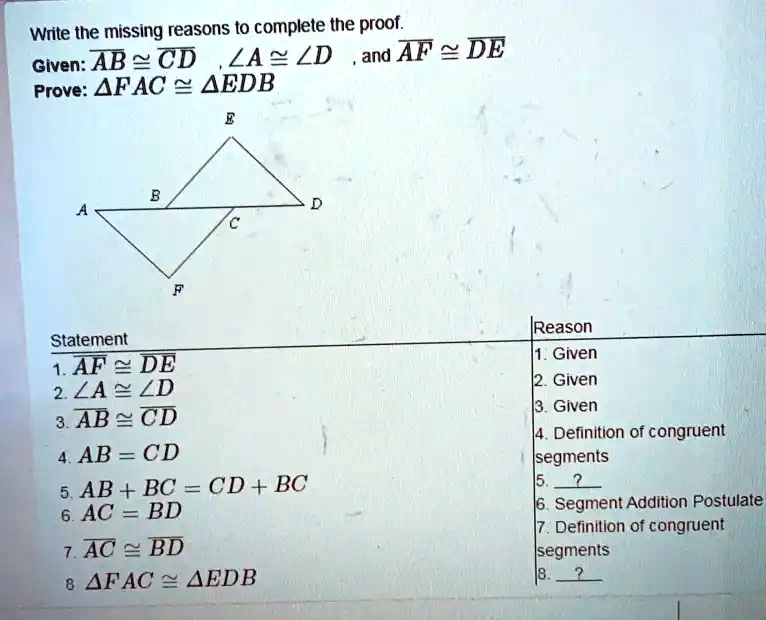
The Correct Answer and Explanation is:
To complete the proof that ΔFAC ≅ ΔEDB, the correct missing reasons are:
- Step 5 Reason: Addition Property of Equality
- Step 8 Reason: SAS Congruence Postulate
Here is a clear and structured explanation:
The problem presents two triangles, ΔFAC and ΔEDB, and provides three congruent relationships: AB ≅ CD, ∠A ≅ ∠D, and AF ≅ DE. We aim to prove that the two triangles are congruent.
The proof begins with the three given facts: AF ≅ DE, ∠A ≅ ∠D, and AB ≅ CD. These are the foundation for constructing congruent parts between the two triangles.
In step 4, we assert that AB = CD. This follows from the definition of congruent segments, since congruent segments have equal length. In step 5, we state that AB + BC = CD + BC. This is justified using the Addition Property of Equality, which allows the same quantity to be added to both sides of an equation. Since AB = CD, adding BC to both gives equal sums.
Step 6 claims AC = BD. This follows from the Segment Addition Postulate, which says that the length of a segment made by adding two connected segments equals the total length. Since AB + BC = AC and CD + BC = BD, their equality implies AC = BD.
In step 7, we conclude AC ≅ BD using the definition of congruent segments, since they have equal lengths.
Finally, we apply the SAS Congruence Postulate in step 8. Triangles FAC and EDB each have two sides and the included angle congruent: AF ≅ DE, ∠A ≅ ∠D, and AC ≅ BD. This satisfies the condition of the postulate and thus proves that the two triangles are congruent.
